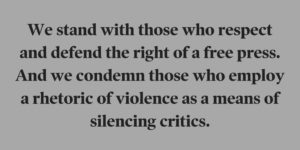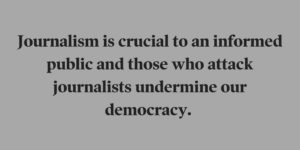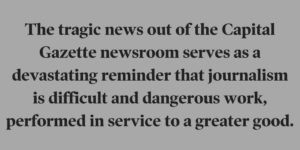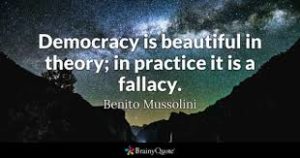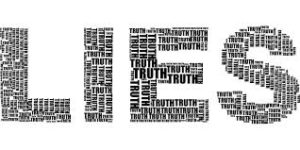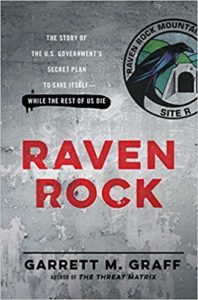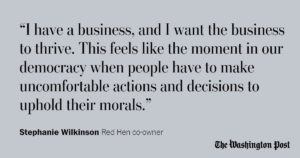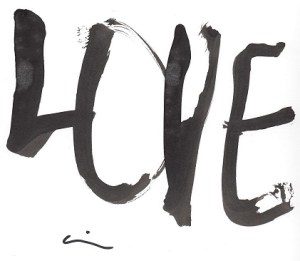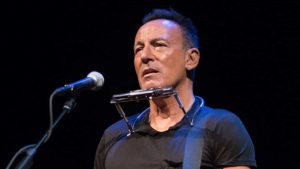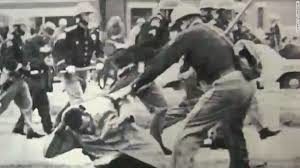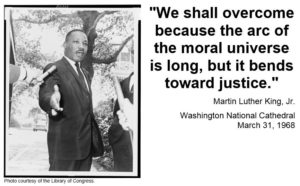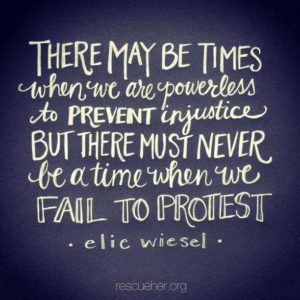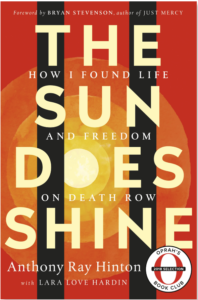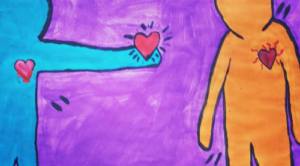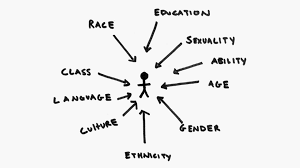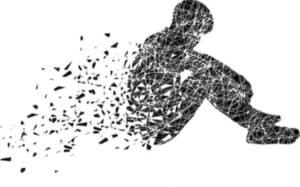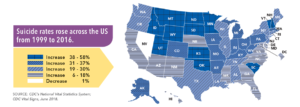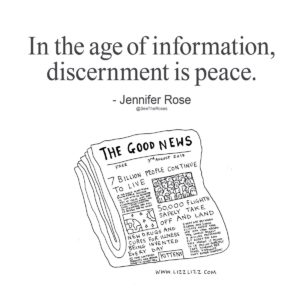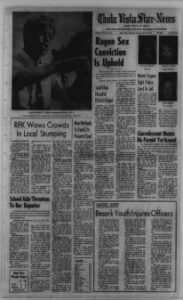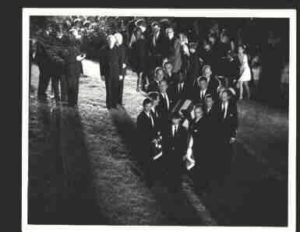#HateWins
June 26, 2018And the hits just keep on coming.
- Travel Ban
- $2 (B) in free advertising from network television during DT 2016 campaign.
- 94 (M) registered voters DID NOT VOTE.
- Mitch McConnell (Senate Majority) blocked Obama’s Supreme Court appointee.
- Drilling on public land.
- Family separation.
- Lies. Deception.
We did this to ourselves.
Society of Friends
June 25, 2018‘A farm in not a farm without its barn.’
- integrity
- equality
- simplicity
- community
- stewardship of the Earth
- and peace.
From a friend:
“All of us, culturally, and each of us individually, has a piece of the puzzle, a part of the answer; I don’t quite know the question, but I believe that the answer is peace.”
Reality check.
June 23, 2018All the World is full of suffering. It is also full of overcoming. -Helen Keller
Much of our anxiety and inner turmoil comes from living in a global culture whose values drive us from the essence of what matters. -Mark Nepo
As spiritual beings, we have within us the inherent power to rise above any circumstance. -Rev. Jane Beach
NPR
David Folkenflick
‘When the White House Can’t Be Believed’
This essay isn’t about spin, or splitting hairs, or differing opinions.
This involves a reality check about our expectations of the people who act in our name. About credibility at the highest levels of our government. About people whose words are heard abroad as speaking for our nation. About the public and the media that try, however imperfectly, to serve it.
[…]
You could call what she [Homeland Security Secretary Kirstjen Nielsen] said a deception, an evasion or a technical nicety. NPR will not call what Nielsen said a lie because it cannot gauge her intent.
I report about the media for NPR and in so doing, I periodically cover NPR and its policies. I don’t speak for the network. I would say the word “lie” fits here.
[…]
But what you call it almost doesn’t matter.
More important is that the media and the public register a fundamental fact: Top people speaking for the United States aren’t telling us the truth — starting with the president.
https://www.npr.org/2018/06/20/621876079/when-the-white-house-cant-be-believed
Columbia Journalism Review
Advocates are becoming journalists. Is that a good thing?
As the media landscape continues to fragment and many outlets struggle to afford more ambitious reporting projects, non-governmental organizations and advocacy groups like the ACLU and Human Rights Watch are increasingly taking on the role of reporter—breaking stories and in some cases even helping to change policy. But even those leading the new NGO-as-muckraker efforts acknowledge that they’re no replacement for traditional news organizations.
The line between advocacy groups and media organizations has been blurring for some time.
Journalism professor Dan Gillmor wrote a decade ago about the work the ACLU was doing around Guantanamo Bay, and the reporting Human Rights Watch did on issues such as domestic workers in Saudi Arabia. A number of academics have also written about the increasing overlap between NGOs and journalism.
“As traditional journalism companies are firing reporters and editors right and left, the almost-journalist organizations have both the deep pockets and staffing to fill in some of the gaps,” Gillmor wrote. He also encouraged NGOs to concentrate on applying journalistic principles such as fact-checking and transparency.
Of course, traditional media organizations often get accused of distorting the news in similar ways—of selectively including certain facts or quoting certain individuals—because those facts or views fit a certain worldview. In some cases it’s done in order to generate traffic and advertising revenue, but there can also be ideological elements at work (Fox News, or at least the version of it that exists in primetime, springs to mind).
In the end, the world of journalism and the world as a whole are probably better off now that there are activist organizations that are trying to use the tools of modern media to tell stories. The more sources of information there are, especially from remote or developing nations, the better. In some ways, that’s one of the biggest benefits of a democratized media environment—anyone anywhere can become a news source, and that’s fundamentally a good thing, even if some take advantage of it for their own purposes.
d: At this moment in our democracy, we do indeed need moral thinkers serving as activists; both-sides journalism, and for-profit media prior and post the 2016 presidential primary, have delivered us to this point of massive deception and gaslit lies. Perhaps only journalists as activists, and ‘democratized media’ will deliver us from the deception and recurrent lies being generated from this nation’s highest offices.
Society of Professional Journalists
spj.org
Minimize Harm
Journalists should:
- Take responsibility for the accuracy of their work.
- Balance the public’s need for information against potential harm or discomfort.
- Show compassion for those who may be affected by news coverage.
The Intercept
All mass crimes in history start with a justification, a necessity rationalization, a sick form of nationalism and racism.
Administration of Hate: The Snatching and Caging of Immigrant Children. It is Happening Here.
This week on Intercepted: The Intercept’s Ryan Devereaux talks about his recent reporting in the border state of Arizona and paints a harrowing picture of the human toll of family separations by ICE. Alice Speri lays out her investigation of sexual abuse by ICE officers and contractors in immigration detention centers. Sohail Daulatzai discusses his new book, “With Stones in Our Hands: Writings on Muslims, Racism, and Empire,” and explains why the film “The Battle of Algiers” is still relevant more than 50 years after its release. The legendary resistance singer Barbara Dane shares stories from her 91 years on earth fighting militarism, racism, and economic injustice. Plus, Homeland Security Secretary Kirstjen Nielsen competes on Jeopardy! and we hear a cover of “The Partisan” from composers and musicians Leo Heiblum of Mexico and Tenzin Choegyal of Tibet.
NPR
James Doubek
White Civil Rights Rally Approved for D.C. in August
The National Park Service has approved an initial request for organizers to hold a second “Unite the Right” rally, this time across the street from the White House in August — one year after white supremacists gathered in Charlottesville, Va.
The park service has given initial approval to an application from Jason Kessler to hold a “white civil rights rally” on Aug. 11 and 12, as first reported by WUSA9. Kessler, along with white supremacist Richard Spencer and others, organized the 2017 rally, during which a woman was killed. The park service has not yet issued a permit for the event.
https://www.npr.org/2018/06/21/622144455/white-civil-rights-rally-approved-for-d-c-in-august
Think Progress
Meet the Favorite Philosophers of Young White Supremacists
A new book explores how philosophers like Nietzsche and Heidegger have inspired a new generation of fascists.
Casey Michel
As Donald Trump basked in his presidential election victory in 2016, white supremacist Richard Spencer unleashed a round of Nazi-inspired praise for Trump’s victory — sentiments echoed by Alexander Dugin, a Russian neo-fascist whose writings reached a broader-English-speaking audience thanks to Spencer and his wife, Nina Kouprianova.
These three, writes University of Toronto political science professor Ronald Beiner, all trace their fascistic views back to a pair of German philosophers: Friedrich Nietzsche and Martin Heidegger, both of whom played outsized roles in either inspiring
As Beiner writes in Dangerous Minds: Nietzsche, Heidegger, and the Return of the Far Right, the recent resurgence of the far-right and white supremacy didn’t occur in any kind of philosophical vacuum. Rather, it’s rooted in a long lineage of fascists who have leaned on Nietzsche and Heidegger to excuse and expand their own racism, anti-Semitism, and personal quests for power.
[…]
Decades later, the two philosophers have gained newfound prominence thanks to the growing impact of neo-fascists and white supremacists on both sides of the Atlantic. ThinkProgress spoke with Beiner about the effect Nietzsche and Heidegger have had, and what may come next for the young white supremacists who have found their philosophical heroes in a pair of German thinkers.
[…]
Nietzsche and Heidegger despise the Reformation, the Enlightenment, the French Revolution — they resolutely, deliberately, and bitterly reject that legacy, that inheritance of the modern West. I’d say they violently reject [them]. Why is that? Take the French Revolution. Really what it stands for is the idea that people should not be locked into pre-dictated roles in life, scripts they’re meant to live out. The idea is to give individuals space to map out their own ideas of life, to live freely. Well, Nietzsche totally rejects that.
[…]
The project is: destroy liberalism. Destroy the moral and political horizons of modernity. Destroy everything from the ground up. And if it takes a nuclear explosion and just starting all over again, they’re happy with it.
https://thinkprogress.org/this-philosophers-of-young-white-supremacists-33605ba538c0/?utm_campaign=trueAnthem:+Trending+Content&utm_content=5b2e8ab819694a00076e8a10&utm_medium=trueAnthem&utm_source=twitter
d: Then, if we really want to sober up, we read this:
In Raven Rock, Garrett Graff sheds light on the inner workings of the 650-acre compound (called Raven Rock) just miles from Camp David, as well as dozens of other bunkers the government built its top leaders during the Cold War, from the White House lawn to Cheyenne Mountain in Colorado to Palm Beach, Florida, and the secret plans that would have kicked in after a Cold War nuclear attack to round up foreigners and dissidents, and nationalize industries.
Equal parts a presidential, military, and political history, Raven Rock tracks the evolution of the government’s plans and the threats of global war from the dawn of the nuclear era through the present day. Relying upon thousands of pages of once-classified documents, as well as original interviews and visits to former and current COG facilities, Graff brings readers through the back channels of government to understand exactly what is at stake if our nation is attacked, and how we’re prepared to respond if it is. [Amazon]
—Walter Isaacson, author of Steve Jobs and Einstein:
Garrett Graff has given us a colorful and frightening account of the American government’s plans for doomsday, and the secret bunkers where official could go to save themselves. These early plans still have their counterparts today, and they reveal a lot about how warfighting doctrine evolved. Read it and be fascinated—and a little scared.”
Fresh Air’s Terry Gross interviewed Graff in 2017, and re-aired her interview on Friday, June 22nd. The book was just released in paperback.
Graff is a former editor of Washingtonian magazine and Politico Magazine. He also is a contributing writer to Wired magazine. Terry interviewed him last year when his book was published. It’s now out in paperback.
[excerpt]
Raven Rock is this massive, hollowed-out mountain. I mean, it’s a free-standing city inside, you know, with individual buildings – three-story buildings built inside of this mountain. And it has everything that a small city would. I mean, there’s a fire department there. There’s a police department, medical facilities, dining halls. The dining facility serves four meals a day. It’s a 24-hour facility. And it has been – it was sort of mothballed to a certain extent during the 1990s as the Cold War ended and then was restarted in a hurry after 9/11 and has been pretty dramatically expanded over the last 15 years and, you know, today could hold as many as 5,000 people in the event of an emergency.
GROSS: So you have these underground bunkers the size of cities in case of nuclear attack to protect members of government and keep the government going. You say that these places are staffed 24 hours a day, 365 days a year.
GRAFF: Yes. They are staffed 24 hours a day, 365 days a year. And it’s not just the bunkers. Right as we are sitting here talking today, there is a presidential doomsday plane, these converted 747s that are known as the Nightwatch planes. There are four of them. They’ve been in existence for the last quarter century. And one of them is sitting on a runway in Omaha, Neb., at Offutt Air Force Base right now. Its engines are on. It’s fully staffed with everyone that you would need to lead a nuclear war. And it’s ready to launch in a 15-minute alert in the event of an emergency and rendezvous with the president, wherever he may end up being, and evacuate him.
d: And then we remember who occupies the Oval Office.
#
Tilted towards the sun.
June 21, 2018There’s an urgency to this moment. We must choose between a world of subjects and a world of objects.
In his book Carpe Jugulum, Terry Pratchett has a character define sin thusly: “Sin, young man, is when you treat people like things.”
We’re seeing the consequences of this everywhere these days: People are being objectified.
St. Gregory of Nyssa (c. 335-c. 394) offered a beautiful, succinct, and useful definition of sin. Sin, he [suggested], is a refusal to keep growing.
Namaste asks something huge of us: If the divinity in me recognizes the divinity in you, how could I abuse, debase, violate, or harass? I would, after all, only be punishing myself.
Here we have an antidote to objectification. Something infinite, immortal, mysterious, loving, and alive abides in me and it is from this light that I bow toward that which is infinite, immortal, mysterious, loving, and alive in you. What if this was our set-point, our baseline, the fundamental assumption we had about every single person we encountered? All our reputations precede us: We’re divine.
Mystics from every tradition testify to the aliveness and sentience of all things, that the natural world is lit up with the flame of divinity. This does and must include us. We’re not taught this. In fact, most of what we’re taught opposes this.
A world of objects is a kind of hell. A world of subjects—divine beings honoring the divinity in the other—is surely heaven. May we point our feet toward this heaven and begin the hard and necessary work of walking there.
[Richard Rohr, Center for Action]
Justice & Mercy
June 20, 2018Center for Action
Bryan Stevenson (b. 1959) is a lawyer, social justice activist, and founder of the Equal Justice Initiative and the National Memorial for Peace and Justice in Montgomery, Alabama. [1] In his book Just Mercy, Stevenson describes how being in touch with our own humanity and need for mercy helps give us the compassion needed for restorative justice. He is a real contemporary hero for many of us at the Center for Action and Contemplation.
My years of struggling against inequality, abusive power, poverty, oppression, and injustice had finally revealed something to me about myself. Being close to suffering, death, executions, and cruel punishments didn’t just illuminate the brokenness of others; in moments of anguish and heartbreak, it also exposed my own brokenness. You can’t effectively fight abusive power, poverty, inequality, illness, oppression, or injustice and not be broken by it. . . .
I guess I’d always known but never fully considered that being broken is what makes us human. We all have our reasons. Sometimes we’re fractured by the choices we make; sometimes we’re shattered by things we would never have chosen. But our brokenness is also the source of our common humanity, the basis for our shared search for comfort, meaning, and healing. Our shared vulnerability and imperfection nurtures and sustains our capacity for compassion.
We have a choice. We can embrace our humanness, which means embracing our broken natures and the compassion that remains our best hope for healing. Or we can deny our brokenness, forswear compassion, and, as a result, deny our own humanity. . . .
So many of us have become afraid and angry. We’ve become so fearful and vengeful that we’ve thrown away children, discarded the disabled, and sanctioned the imprisonment of the sick and the weak—not because they are a threat to public safety or beyond rehabilitation but because we think it makes us seem tough, less broken. I thought of the victims of violent crime and the survivors of murdered loved ones, and how we’ve pressured them to recycle their pain and anguish and give it back to the offenders we prosecute. I thought of the many ways we’ve legalized vengeful and cruel punishments, how we’ve allowed our victimization to justify the victimization of others. We’ve submitted to the harsh instinct to crush those among us whose brokenness is most visible.
But simply punishing the broken—walking away from them or hiding them from sight—only ensures that they remain broken and we do, too. There is no wholeness outside of our reciprocal humanity.
Embracing our brokenness creates a need for mercy. I began thinking about what would happen if we all just acknowledged our brokenness, if we owned up to our weaknesses, our deficits, our biases, our fears. Maybe if we did, we wouldn’t want to kill the broken among us who have killed others. Maybe we would look harder for solutions to caring for the disabled, the abused, the neglected, and the traumatized. We could no longer take pride in mass incarceration, in executing people, in our deliberate indifference to the most vulnerable.
Bruce
In response to requests for the text of Bruce’s remarks before he performed “The Ghost of Tom Joad” last night, here is a rough transcript:
I never believed that people come to my shows, or rock shows to be told anything.
But I do believe that they come to be reminded of things. To be reminded of who they are, at their most joyous, at their deepest, when life feels full. It’s a good place to get in touch with your heart and your spirit, to be amongst the crowd. And to be reminded of who we are and who we can be collectively. Music does those things pretty well sometimes, particularly these days when some reminding of who we are and who we can be isn’t such a bad thing.
That weekend of the March for our Lives, we saw those young people in Washington, and citizens all around the world, remind us of what faith in America and real faith in American democracy looks and feels like. It was just encouraging to see all those people out on the street and all that righteous passion in the service of something good. And to see that passion was alive and well and still there at the center of the beating heart of our country.
It was a good day, and a necessary day because we are seeing things right now on our American borders that are so shockingly and disgracefully inhumane and un-American that it is simply enraging. And we have heard people in high position in the American government blaspheme in the name of God and country that it is a moral thing to assault the children amongst us. May God save our souls.
There’s the beautiful quote by Dr. King that says the arc of the moral universe is long but it bends toward justice. Now, there have been many, many days of recent when you could certainly have an argument over that. But I’ve lived long enough to see that in action and to put some faith in it. But I’ve also lived long enough to know that arc doesn’t bend on its own. It needs all of us leaning on it, nudging it in the right direction day after day. You gotta keep, keep leaning.
I think it’s important to believe in those words, and to carry yourself, and to act accordingly. It’s the only way that we keep faith and keep our sanity.
I’ve played this show 146 nights with basically the same setlist, but tonight calls for something different…
– Bruce Springsteen
Symmetry
6.30.18
June 19, 2018A nationwide mobilization against family separation on JUNE 30TH, with a march on Washington and cities around the country.
Information: familiesbelongtogether.org
Justice education.
June 14, 2018The Sun Does Shine: How I Found Life and Freedom on Death Row. The book is now a best seller on a number of lists including the New York Times Book Review and Amazon. urrent EJI [Equal Justice Initiative] staff member and former client, Anthony Ray Hinton, spent 30 years on death row for a crime he did not commit. His memoir is a powerful and revealing story of hope, love, and justice.
Richard Rohr, Center for Action:
Commitment to Nonviolence
Violence is awful. Violence is ugly. Violence is the saddest of human acts. As [Pope] John Paul stated, “War is a defeat for humanity.” It is so very difficult to lead people into a willing critique of their politics, their country, their allegiances, without some awareness of how violence is so often the handmaid of greed and power.
When our lives are active and occupied in the name of doing good, there is little space for violence and doing harm.
Community
Community is the most neglected and probably the most difficult ingredient for us to hold to in the U.S. context. And for the most obvious of reasons—we have come to worship at the altar of independence, individualism and autonomy. As much as there is a deep hunger for connection, common purpose, and kindred hearts, there is a merciless, deep-rooted entrenchment in the forces of competition, freedom and self-rule.
As you might guess, when I say community I do not mean the bowling community, or even the church bowling community. Rather, I mean a community that makes very intentional commitments, including those I have mentioned so far: engagement with those of the margins, justice education or formation, simplicity, prayer, and peacemaking.
We must imagine what peace and justice look like on this earth, and we must begin the work of crafting structures, institutions, human realities that are the antithesis to division, hate, greed and scarcity, that anticipate and cultivate justice and goodness and peace.
Restorative justice.
June 12, 2018The aim of restorative justice is to return the person to a useful position in the community. Thus, there can be healing on both sides. Such justice is a mystery that only makes sense to the soul. It is a direct corollary of our “economy of grace” and yet the term restorative justice only entered our vocabulary in the last few decades. How can we deny that there is an evolution of consciousness?
What humanity really needs is an honest exposure of the truth and accountability for what has happened. Only then can human beings move ahead with dignity. Hurt needs to be spoken and heard. It does not just go away on its own.
As any good therapist will tell you, you cannot heal what you do not acknowledge. What you do not consciously acknowledge will remain in control from within, festering and destroying you and those around you. In the Gospel of Thomas, Jesus teaches, “If you bring forth that which is within you, it will save you. If you do not bring it forth, it will destroy you”.
Only mutual apology, healing, and forgiveness offer a sustainable future for humanity. Otherwise, we are controlled by the past, individually and corporately. We all need to apologize, and we all need to forgive or this human project will surely self-destruct. Otherwise, history devolves into taking sides, bitterness, holding grudges, and the violence that inevitably follows. As others have said, “Forgiveness is to let go of our hope for a different past.” Reality is what it is, and such acceptance leads to great freedom, as long as there is also both accountability and healing forgiveness.
-Richard Rohr, Center for Action
Crossroads of identity.
June 11, 2018As we saw earlier this year, humans need concrete and particular experiences to learn the ways of love. We don’t learn to love through abstract philosophy or theology. That’s why Jesus came to show God in human form, revealing a face we could recognize and relate to. Let’s first call justice giving everything its full due. Thus, it must begin with somehow seeing the divine (ultimate value) in the other. If we really see someone in their fullness, we cannot help but treat them with kindness and compassion.
Even as we know that every human’s being is inherently and equally good, dignified, and worthy of respect, we cannot ignore our very real differences. The problem is that the ego likes to assign lesser and greater value based on differences. Until all people everywhere are treated with dignity and respect, we must continue calling attention to imbalances of privilege and power. Arbitrary, artificial hierarchies and discrimination are based on a variety of differences: for example, gender, sexuality, class, skin color, education, physical or mental ability, attractiveness, accent, language, religion, and so on.
“Intersectionality” is a rather new concept for most of us to help explain how these attributes overlap. You can be privileged in some areas and not in others. A poor white man has more opportunities for advancement than a poor black man. A transgender woman of color has an even higher risk of being assaulted than a white heterosexual woman. Someone without a disability has an easier time finding a job than an equally qualified candidate who has a disability.
Pause for a moment and think about the areas in which you benefit, not because of anything you’ve done or deserve but simply because of what body you were born with, what class privilege you enjoy, what country or ethnicity you find yourself in.
In the book Intersectionality in Action, experienced educators recognize that “admitting one’s privilege can be very difficult,” especially for those who consider themselves tolerant and prefer to not use labels, “calling themselves color-blind, for instance.”
When we finally recognize our unearned benefits—at the expense of others—we may feel ashamed and that may lead us to make excuses for ourselves or overly identify with a less privileged aspect of our identity (for example as Jewish or female). Yet as we move beyond these attachments and emotions, “[We] learn that [our] privileges and disadvantages can coexist, intersect, and impact the way [we] move through different environments.”
We must work to dismantle systems of oppression while at the same time honoring our differences and celebrating our oneness!
Our differences must first be maintained—and then overcome by the power of love.
Infinite Love preserves unique truths, protecting boundaries while simultaneously bridging them.
-Richard Rohr, Center for Action
BIONEERS
•compound racism
•intersectionality
•justice vs status quo
•women’s leadership
‘When the current president rode a wave of white anxiety into the White House in 2016, it was part of a backlash to the Obama presidency, one that revealed an increasingly explicit white nationalism and revived an overtly exclusionary agenda: roll back rights and protections for people of color, immigrants, Muslims, women, and gay and transgender people. Then came the backlash to the backlash: a rapidly spreading awakening that all these peoples, movements and struggles are actually connected in one story. Visionary law professor and change-maker Kimberlé Crenshaw shows that it’s only at the crossroads of our many identities that will we will find a story big enough to embrace the diversity and complexity of our globalized 21st century world.’
Stay.
June 10, 2018None of us can truly know what we mean to other people, and none of us can know what our future self will experience. As a scholar, Jennifer Michael Hecht proposes a new cultural reckoning with suicide, based not on morality or on rights but on our essential need for each other. “Look how involved we all are just under the surface, and let’s try to help each other.” The communitarian is what struck me first.
We’re in it together in this profound way, and you can take some strength from that. I think that’s, for me, that’s been very important. Just feel like, obviously we’re not individuals. Wow, how could I have thought that we were on that kind of level? And it’s funny, because my two arguments, that you owe it to other people and that you owe it to your future self, are both about looking at what the individual means. Because when you look at a person within a group, and all the trends we follow, the clothes, the car, the not-car, all these trends that we follow, you realize the extent to which we’re enmeshed. And when you look at yourself and realize that you have fallen in and out of love with the same person, you have fought with friends thinking you’ll never speak to them again, and then you love them again.
It’s a great idea to write yourself a note saying, “I am happy right now despite previous depressions. Please do not do anything to inhibit this from happening again.” And go read it when you’re down. There it is in your handwriting.Remind your mood that the other mood exists. Because depression’s particularly — one of its definitions is that within depression you can’t see that you’ve ever not been depressed.
It’s impulsive. It’s tremendously impulsive. And that if you can get past the impulse, and if you can put a conceptual barrier in your head, that it can work in the same way that that chain link fence can. You just — you’ve put up a barrier. You’ve talked to yourself about this. And don’t argue with yourself. Get in bed and feel terrible, or go get help, or, jeez, playing a video game sometimes takes my mind off misery. There’s ways to get through the worst, and, really, when I’m starting out, what I’m starting out with is really just the idea of, yeah, sometimes life, for some of us, can be unbelievably painful. But don’t do this one thing. Your well-being is important to other people.
Choose to stay alive.
https://onbeing.org/programs/jennifer-michael-hecht-suicide-and-hope-for-our-future-selves/
This past week reminded me that I need to be kinder. I never know what someone who is going through or why they are feeling the way that they do.
Oh, Infinite Creator, hold us softly in your great love. Remind us that your light connects us to all people and all things–the light alive in each of us. May we remember that we’re here on purpose, created to shine the light of love, peace and joy in our own way. Today, may we know the truth of our being and live from that knowing. -Science of Mind
What should you do when a loved one is severely depressed? Don’t underestimate the power of showing up.
YOU ARE SO LOVED AND WE LIKE HAVING YOU AROUND. *ties one end of this sentence to your heart, the other end to everyone who loves you in this life, even if clouds obscure your view *checks knots* THERE. STAY PUT, YOU. TUG IF YOU NEED ANYTHING. -LIN-MANUEL MIRANDA
• • • •
You may not feel that your presence is wanted. But just being by the side of someone who is depressed, and reminding her that she is special to you, is important to ensuring that she does not feel alone. It’s OK to ask if she’s having suicidal thoughts.
Lots of people struggle with depression without ever considering suicide. But depression is often a factor. Although you may worry that asking, “Are you thinking about killing yourself?” will insult someone you’re trying to help — or worse, encourage her to go in that direction — experts say the opposite is true.
“It’s important to know you can’t trigger suicidal thinking just by asking about it.”
If the answer is yes, it’s crucial that you calmly ask when and how; it’s much easier to help prevent a friend from hurting herself if you know the specifics.
In some cases, calling 911 may be the best option. If you do, ask for a crisis intervention team, Mr. Doederlein urged.
But remember that interactions with law enforcement can vary wildly, depending on race and socio-economic background. In cases where you’re concerned that calling police could put a person in danger, try to come up with an alternate plan in advance.
-Heather Murphy
• • • •
Check on your strong friends.
Check on your quiet friends.
Check on your “happy” friends.
Check on your creative friends.
Check on each other.
-Lauren Warren
• • • •
CDC/NPR
Suicide rates have increased in nearly every state over the past two decades, and half of the states have seen suicide rates go up more than 30 percent.
The rise in suicide rates was highest in the central, northern region of the U.S., with North Dakota, for example, seeing a 57.6 percent increase since 1999.
On average, there are 123 suicides per day in the United States.
We often assume that people who commit suicide are mentally ill, but this isn’t always the case. There are many factors that can contribute to suicide that have nothing to do with mental illness, including loss of a relationship, loneliness, chronic illness, financial loss, history of trauma or abuse and the stigma associated with asking for help.
• • • •
But why are so many more Americans getting to this level of emotional despair than in the past? As journalist Johann Hari wrote in his best-selling book Lost Connections: Uncovering the Real Causes of Depression — and the Unexpected Solutions, the epidemic of depression and despair in the Western World isn’t always caused by our brains. It’s largely caused by key problems in the way we live.
We exist largely disconnected from our extended families, friends and communities — except in the shallow interactions of social media.
-Kirsten Powers/USA Today
• • • •
Scott Simon/Weekend Edition/NPR
“I have to talk in an utterly personal way about suicide. My grandmother took her life, and my mother, who struggled against the impulse several times, said, “Suicide puts a fly in your head. It’s always in there, buzzing around.
It is risky to make generalizations about suicide — whether it appears to have been triggered by depression, job loss, sickness, romance, drink or drugs. The person who takes their life may feel alone and isolated. But they leave behind those who love them and who are left to wrestle with sleepless regrets and ceaseless wondering.
Harvard Business Review
Research in 2013 from demographer Richelle Winkler shows that in the U.S., age segregation is often as ingrained as racial segregation. Using census data from 1990 to 2010, Winkler found that in some parts of the country, old (age 60+) and young (age 20–34) are roughly as segregated as Hispanics and whites. This broader pattern is reflected in our neighborhoods. A 2011 study from MetLife and the National Association of Homebuilders found that nearly one-third of people over the age of 55 live in communities that entirely or mostly comprise people 55 and older.
“I think we’re in the midst of a dangerous experiment,” Cornell University professor Karl Pillemer told The Huffington Post. “This is the most age-segregated society that’s ever been. Vast numbers of younger people are likely to live into their 90s without contact with older people. As a result, young people’s view of aging is highly unrealistic and absurd.”
The extent of the isolation, of course, runs both ways — especially when it comes to young and old who aren’t related.
An array of other housing innovators, aging experts, architects, and homebuilders — including developers of senior-only communities — are contributing to the trend.
And now some of the biggest homebuilders are getting into the act. Lennar is promoting its NextGen Model, which includes space for families and “aging parents, live-in caretakers, post-college grown children, and more” under one roof, with privacy intact. Pardee Homes, another big builder, has launched GenSmart Suite to create homes designed to allow multiple generations to live together. While these efforts are usually discussed in terms of an expanded notion of family, they nonetheless contribute to the creation of multigenerational neighborhoods.
It makes sense that this innovation is beginning to happen now, as we reach an important demographic turning point. For the first time ever, there are more Americans over 50 than under 18. These numbers create both opportunity and urgency for making the most of the multigenerational reality that’s already here and that’s only projected to grow. And they force us to redefine what it means to be efficient — and human.
• • • •
Pain is often a sign that something has to change.
Our hears and bodies often give us messages we fail to pay attention to. Ironically, we are all so aware of pain, can hardly ignore it, but we rarely hear what it has to say.
It is true that we may need to withstand great pain, great heartache, great disappointment and loss in order to unfold into the rest of our lives. But our pain may also be showing us exactly where we need to change.
Try to let the pain move through you.
-Mark Nepo
Always remember: ‘Your well-being is important to other people. Choose to stay alive. We have need for each other.’
Vernon Jordan
June 8, 2018“In so many ways, our challenge in our national life is to not let the exceptions become the rule,” Jordan told the crowd gathered in the Holton Memorial Quadrangle at DePauw University’s 179th commencement. “To not let fear and hatred become the rule. To not let a society that gets more divided become the rule. To not let falsehoods become the rule. To not let a lack of leadership, a lack of integrity, a lack of respect for others, become the rule.”
Vernon Jordan
DePauw University Commencement Speech
May 20, 2018
[Jordan is a 1957 graduate of DePauw University, civil rights legend, attorney and presidential adviser.]
Leadership.
I’m sad to report that in the past few years, ever since uncertainty became our insistent 21st century companion, leadership has taken a great leap backwards to the familiar territory of command and control. —Margaret Wheatley
Center for Action & Contemplation
Richard Rohr
There is no greater training for true leadership than living in the naked now. There, we can set aside our own mental constructs, receive input and ideas from all directions, and lead even more creatively and imaginatively—with the clearer vision of one who lives beyond himself or herself. This is surely why some of Christianity’s great mystics, such as Catherine of Siena (1347-1380), Ignatius of Loyola (1491-1556), and Teresa of Ávila (1515-1582), were also first-rate leaders, motivators of others, and creative reformers of institutions.
Here are some insights into what every good, servant-hearted, nondual leader knows and practices, whether in community, in the workplace, or in the classroom. Creative leaders:
- are seers of alternatives.
- move forward by influencing events and inspiring people more than by ordering or demanding.
- know that every one-sided solution is doomed to failure. It is never a lasting solution but only a postponement of the problem.
- learn to study, discern, and search together with others for solutions.
- know that total dilemmas are very few. We create many dilemmas because we are internally stuck, attached, fearful, over-identified with our position, needy of winning the case, or unable to entertain even the partial truth that the other opinion might be offering.
- know that wisdom is “the art of the possible.” The key question is no longer “How can I problem solve now and get this off my plate?” It is “How can this situation achieve good for the largest number and for future generations?”
- continue finding and sharing new data and possibilities until they can work toward consensus from all sides.
- want to increase both freedom and ownership among the group—not subservience, which will ultimately sabotage the work anyway.
- emphasize the why of a decision and show how it is consistent with the group’s values.
In short, good leaders must have a certain capacity for thinking beyond polarities and tapping into full, embodied knowing (prayer). They have a tolerance for ambiguity (faith), an ability to hold creative tensions (hope), and an ability to care (love) beyond their own personal advantage.
Jon Meacham/The Soul of America, The battle for Our Better Angels
“The Presidency is not merely an administrative office. That’s the least of it. It is more than an engineering job, efficient or inefficient. It is pre-eminently a place of moral leadership.”
-Franklin D. Roosevelt
Eleanor Roosevelt, who knew much about the possibilities and perils of politics, wrote shortly before her death in 1962, “The course of history is directed by the choices we make and our choices grow out of the ideas, the beliefs, the values, the dreams of the people. It is not so much the powerful leaders that determine our destiny as the much more powerful influence of the combined voice of the people themselves.
“You do not lead by hitting people over the head. Any damn fool can do that, but it’s usually called ‘assault,’ not ‘leadership.’ I’ll tell you what leadership is. It’s persuasion, and conciliation, and education, and patience. It’s long, slow, tough work. That’s the only kind of leadership I know, or believe in, or will practice.”
-Dwight D. Eisenhower
6.6.68
June 6, 2018I remember his white shirt. And his sleeves rolled up to his elbows. He was smiling. A big smile. I was looking up. My memory recalls a long platform, perhaps the back of a flatbed truck. And the people. So many people in the parking lot of the Chula Vista Public Library. I was 7. I was wearing a sundress and barefoot. And I remember that suddenly my mom seemed frightened. She didn’t think we were safe. She quickly picked me up and we were gone.
Days later I remember the television set on in our living room turned to a funeral, in black and white. I knew something very sad had happened. Our home was quiet, no one was talking. And my mom was very sad.
It wasn’t until older that I understood the funeral I watched on TV was for the same man I had seen in the parking lot of the our public library, days before he was murdered in Los Angeles, a nation trying to endure yet another assassination, urban violence, and the Viet Nam War. Sadness seemingly the new normal.
NPR
‘He is gone, yes — but nowhere near forgotten.’
Robert Kennedy wanted to know more about black America than briefings from the civil rights leadership could provide. So while he was attorney general and later, as a U.S. senator from New York, he made several trips to various parts of the country, urban and rural, to better understand race and poverty. Sometimes he took one of his older children with him.
Robert F. Kennedy Jr. still remembers one visit to Harlem: “At one point (we visited) a Puerto Rican mother in an apartment who kept cats in the apartment to keep rats from getting into the crib where they would bite her baby.”
The accompanying publicity moved the recalcitrant landlord to take care of the building’s vermin problem.
In his book American Values, Robert Kennedy Jr. noted his father also visited the Mississippi Delta and Appalachia, because he wanted Americans to know hunger was not just something they saw in Life magazine photo essays on developing nations.
“There were people — mainly in the Senate and the Congress — who said ‘starvation does not exist in America.’ ” The senator’s eyewitness accounts showed that was wishful thinking. Despite being one of the wealthiest countries on earth, the United States had a hunger problem it didn’t want to see.
During the late ’60s, California farmworkers, most of them Mexican-American, were struggling to bring attention to their abysmal working conditions. Life-long labor activist Dolores Huerta says Robert Kennedy made several visits to the striking farm workers she and Cesar Chavez were organizing in the fields of Delano, Calif.
“When the Senator came to Delano, it definitely put us on the national scene,” Huerta remembers. He came more than once. And he established a lasting friendship with Cesar Chavez, and was with Chavez when he ended a grueling 25-day water-only hunger strike.
“Chavez understood that this was one of the only white politicians — maybe the onlyone — who truly and instantaneously got what was going on with the farm workers,” says biographer Larry Tye.
Dolores Huerta believes that empathy and advocacy created an affection for the Kennedys — especially Robert — that has lasted for generations.
Washington Post/Chris Matthews
His contemporaries noticed the same thing. What made this Kennedy so unique, Jack Newfield wrote, “was that he felt the same empathy for white workingmen and women that he felt for blacks, Latinos and Native Americans. He thought of cops, waitresses, construction workers and firefighters as his people.”
We need leaders like him today, people who can unite diverse people into governing majorities.
RFK got a lot of attention recently for the speech he gave on April 4, 1968, the evening the Rev. Martin Luther King Jr. was killed.
Kennedy tried his best to hold it all together — if sometimes awkwardly.
“I have an association with those who are less well off, where perhaps we can accomplish something bringing the country back together,” he told a reporter just hours before he was killed. “If that division continues . . . we’re going to have nothing but chaos and havoc here in the United States.”
Late that summer, we saw what politics looked like with him gone. The Democratic National Convention in Chicago showed America at war with itself. It was the clash Bobby had wanted to prevent, between the police and the college kid, between the working guy and the better off, between father and son.
It’s been that way pretty much ever since.
As the country said goodbye to Bobby, on that grim June day when his funeral train rolled slowly from New York to Washington, thousands of African Americans gathered at 30th Street in Philadelphia and sang “The Battle Hymn of the Republic.”
But also along the tracks, between the cities, small poor white families stood in affectionate, patriotic salute. So did fathers and sons, including at least one pair of uniformed police officers.
I should end with a final bit of wisdom picked up from my Capitol cop days. It came from a fellow officer who commuted from West Virginia’s Eastern Panhandle. A real country boy, Leroy Taylor was full of attitude and hardscrabble wisdom. One day he took me, the college kid back from the Peace Corps, aside.
“You know why the little man loves his country?” he said. “Because it’s all he’s got!”
These days our politicians speak as if the interests of the discarded factory worker and the ignored inner-city youth cannot be met at the same time. Bobby Kennedy would have called that brand of politics “unacceptable.”
He saw the “little man” within all who struggled in our country. People sensed that about him and loved him for it. You saw the patriotic affection in the faces of those along the tracks that day he was carried to join his brother at Arlington.
Paulette Jordan.
‘From Sea to shining Sea. CA to Texas, Florida to Pennsylvania. The people will rise under one Sun.’
#IdahoGovernor2018
